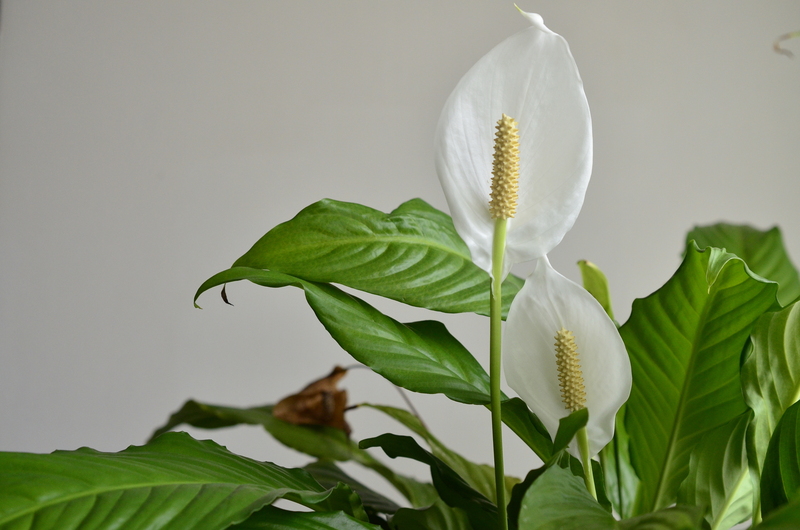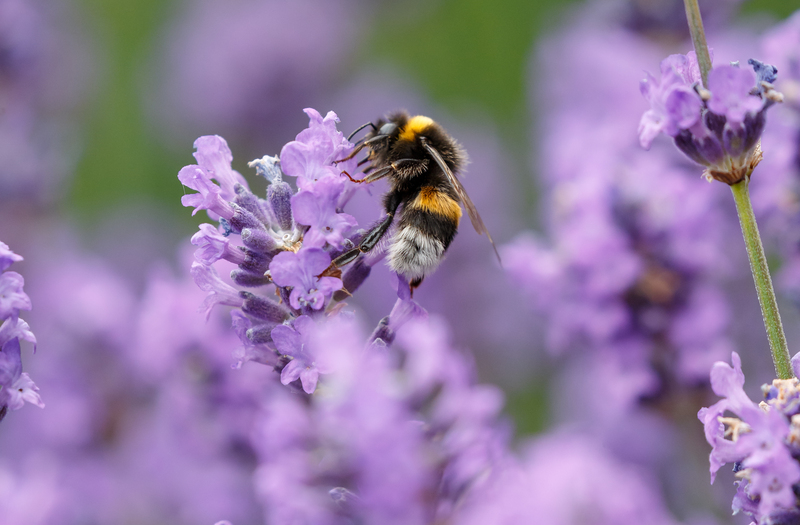Keeping Orchids Blooming Year-Round
Posted on 27/08/2025
Keeping Orchids Blooming Year-Round: The Ultimate Guide
Orchids are among the most enchanting flowering plants, known for their exquisite beauty and diverse blooms. A common myth is that these stunning plants only flower for short periods. In reality, with the right orchid care techniques and understanding, you can keep your orchids blooming year-round. In this comprehensive guide, we will delve into proven strategies for achieving consistent blooms, ensuring your orchids remain a vibrant highlight in your home throughout every season.

Understanding the Orchid Bloom Cycle
Understanding the natural orchid flowering cycle is the first step to continuous orchid blooming. Most popular varieties, including Phalaenopsis, Cattleya, Dendrobium, and Oncidium, have different blooming patterns. For instance:
- Phalaenopsis: Known as the moth orchid, can flower for up to 3 months, often more than once a year.
- Cattleya: Famous for their showy blooms, typically flower once a year for a few weeks.
- Dendrobium: Can bloom several times annually with proper orchid maintenance.
- Oncidium: With right care, can display flowers multiple times each year.
Many orchid species require a period of rest between blooms, while others can be coaxed into flowering again with ideal growing conditions and suitable care.
Factors That Influence Orchid Flowering
1. Providing Optimal Light
Light is a crucial factor in keeping orchids in bloom throughout the year. Different varieties require varying amounts of light. Most orchids prefer bright, indirect light. Too little light leads to lush foliage but sparse blooms, while too much can burn the leaves and inhibit flowering.
- Place orchids near east or west-facing windows for gentle sunlight.
- Use sheer curtains to diffuse intense sunlight, preventing leaf scorch.
- For rooms with insufficient natural light, supplement with grow lights. LED grow lights provide the required spectrum for healthy blooming.
2. Proper Watering Techniques
Watering orchids appropriately keeps roots healthy and supports year-round flowering. Overwatering is a frequent mistake and leads to root rot, while underwatering stresses the plant.
- Water only when the potting medium feels dry to the touch.
- In general, watering once a week is sufficient, but this varies based on the environment, season, and specific orchid type.
- Use room-temperature water, and ensure pots have adequate drainage to prevent stagnant water around roots.
3. Humidity and Air Circulation
Orchids thrive in humidity levels between 40% and 60%. Dry air can cause buds to fall prematurely, while stagnant, overly moist air can invite fungal problems.
- Increase humidity using a humidity tray (a shallow tray filled with water and pebbles beneath the pot).
- Group orchids together to create a micro-climate with higher humidity.
- Use a humidifier, especially during dry winter months.
- Ensure good air circulation with small fans to reduce the risk of disease.
4. Temperature Management
Temperature fluctuations can trigger orchid reblooming. Most orchids prefer daytime temperatures of 65?F to 80?F (18?C to 27?C) and nighttime temperatures 10?F cooler.
- Simulate seasonal changes with slight temperature drops at night, especially in autumn, to encourage spike formation.
- Keep orchids away from direct drafts, heaters, or air conditioning vents.
5. Fertilization for Continuous Blooming
Feeding is vital for orchids that bloom all year. Unlike regular plants, orchids benefit from light, frequent feedings.
- Use a balanced orchid fertilizer (20-20-20 or similar) at half strength, once every two weeks during the growing season.
- Switch to a high-phosphorus formula (like 10-30-20) a month before anticipated blooming to stimulate flower spikes.
- Reduce fertilization during the resting period to avoid salt build-up.
Repotting and Potting Media: Keeping Orchids Healthy for More Blooms
Regular repotting ensures your orchids maintain healthy root systems and receive adequate nutrients, which supports consistent flowering.
- Repot every 12-18 months, or when the potting medium has broken down.
- Use well-aerating mixes such as orchid bark, sphagnum moss, or coconut husk chips.
- Ensure the new pot is just big enough to accommodate roots, as orchids prefer slightly snug spaces.
Aftercare for Post-Bloom Orchids: Encouraging Reblooms
When your orchid flowers fade, proper aftercare ensures the plant recovers, stores energy, and prepares for subsequent blooming cycles.
1. Pruning Spent Flower Spikes
- For Phalaenopsis orchids, cut the spike just above a healthy node to possibly induce a new shoot.
- For other types, remove the spike at the plant base to encourage new growth and future blooms.
2. Allowing for a Rest Period
- Reduce watering and fertilization for several weeks, simulating the orchid's natural dormant cycle.
- This rest period replenishes energy reserves, setting the stage for another round of magnificent blooms.
Troubleshooting Common Blooming Problems
Even the most attentive orchid growers may occasionally struggle with orchid not blooming. Recognizing and correcting these common issues can restore your plant's flowering potential.
- Insufficient Light: Yellow-green leaves indicate too little light. Move your plant closer to the light source or install grow lights.
- Improper Watering: Mushy roots suggest overwatering; wrinkled leaves are a sign of dehydration.
- Low Humidity: Buds falling before opening is a typical sign of dry air; use a humidity tray or mist the leaves carefully.
- Lack of Fertilizer: Weak flower spikes or small blooms result from inadequate nutrition. Resume a balanced feeding routine.
- No Temperature Drop: Some orchids need a cooler nighttime temperature to initiate blooms. Try moving your orchid to a cooler room at night for a few weeks.
Advanced Tips: Tricks for Maximizing Orchid Blooms
1. Staggering Blooms with Multiple Plants
Grow several orchid varieties with different natural blooming times. This ensures you always have some plants in flower, maximizing the visual impact of your orchid collection.
2. Using Bloom Boosters
Specialized fertilizers called bloom boosters are high in phosphorus and can help coax reluctant orchids into budding if they have been otherwise healthy and well cared for.
3. Manipulating Photoperiod
Some species are sensitive to day length. By adjusting artificial light to extend or shorten daylight hours, you can sometimes trigger or extend the flowering season.
4. Stress Techniques for Reflowering
A mild period of drought (slightly less water for a week or two), followed by regular care, can sometimes prompt a stubborn orchid to produce a new spike.
Best Orchid Varieties for Year-Round Blooms
If you dream of continuous orchid flowers in your home, choose varieties known for their extended or repeated blooming habits:
- Phalaenopsis (Moth Orchid): Can reflower from old spikes and blooms several months of the year.
- Dendrobium: Many hybrids bloom faithfully every few months.
- Oncidium (Dancing Lady): Known for profuse sprays of flowers multiple times a year.
- Paphiopedilum (Lady's Slipper): Some varieties offer flowers that can last up to ten weeks or longer.
- Ludisia discolor (Jewel Orchid): Not only attractive for their flowers, but also decorative foliage all year.
Designing Your Home for Orchid Display and Success
To truly enjoy orchid blooms year-round, create the ideal space for their display and well-being:
- Arrange orchids in groups for higher humidity and stunning impact.
- Display in well-lit rooms, away from direct heating or cooling vents.
- Choose decorative containers with proper drainage for beauty and health.
- Consider turning a windowsill into an orchid oasis for spectacular living decoration.

Frequently Asked Questions About Year-Round Orchid Flowering
How long does an orchid flower last?
It depends on the species. Phalaenopsis blooms can last 2-3 months, while others like Cattleya may last 2-3 weeks. With good care, many orchids can repeat bloom in the same year.
Can orchids bloom all year long?
Some orchids can, especially if you have several varieties with staggered cycles. Through proactive care, variety selection, and a controlled environment, your collection can display blooms continuously.
What do I do when my orchid stops blooming?
Continue regular care, adjust light or temperature as needed, prune the flower spike according to species, and provide a brief rest period. This will encourage new growth and reblooming.
Why won't my orchid bloom?
Common reasons include insufficient light, incorrect watering routines, lack of fertilizer, low humidity, or the absence of a temperature drop at night.
Conclusion: Your Blueprint for Keeping Orchids Blooming Year-Round
With their exotic elegance, orchids bring lasting beauty to any setting. By mastering orchid care fundamentals--light, water, humidity, temperature, and nutrition--you can not only encourage consistent orchid flowering but create a dazzling display that brightens your home every day of the year. Whether you're a dedicated collector or a curious beginner, employing these strategies ensures your orchids will bloom more often, for longer periods, and with even more spectacular color and vitality.
Remember, each orchid is unique. Pay close attention to your plants, adjust your routines seasonally, and take note of what works best for your chosen varieties. With patience, observation, and attentive care, keeping orchids blooming year-round is not just a dream--it's a blooming reality!

